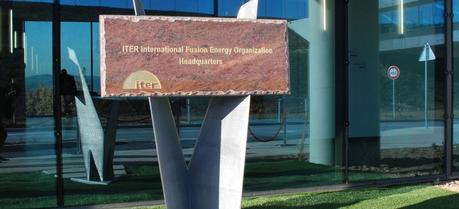 A plaque at the ITER Headquarters. (Credit: ITER)
A plaque at the ITER Headquarters. (Credit: ITER)A new video on fusion produced for the Monaco ITER International Fusion Energy Days (MIIFED) conference explains the ITER project in under 6 minutes.
ITER (originally an acronym of International Thermonuclear Experimental Reactor and Latin for “the way” or “the road”) is an international nuclear fusion research and engineering project, which is currently building the world’s largest experimental tokamak nuclear fusion reactor adjacent to the Cadarache facility in the south of France.
The ITER project aims to make the long-awaited transition from experimental studies of plasma physics to full-scale electricity-producing fusion power plants. The project is funded and run by seven member entities—the European Union (EU), India, Japan, China, Russia, South Korea and the United States. The EU, as host party for the ITER complex, is contributing approximately 45.5% of the cost, with the other six parties contributing 9.1% each.
For the Operation Phase (roughly 2019-2037), the sharing of cost amongst the Members will be as follows: Europe 34 percent, Japan and the United States 13 percent, and China, India, Korea, and Russia 10 percent.
ITER will not produce electricity, but it will resolve critical scientific and technical issues in order to take fusion to the point where industrial applications can be designed. By producing 500 MW of power from an input of 50 MW—a “gain factor” of 10—ITER will open the way to the next step: a demonstration fusion power plant.
On-site construction of the scientific facility began in 2010. In addition to the start of building construction, the project has made the transition from design to the fabrication of large-scale mock-ups and components. Beginning in mid-2014, the shipment of large components will begin from manufacturing sites throughout the world to the construction site in France where they will be assembled into the ITER device.

